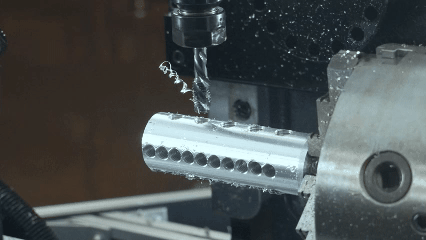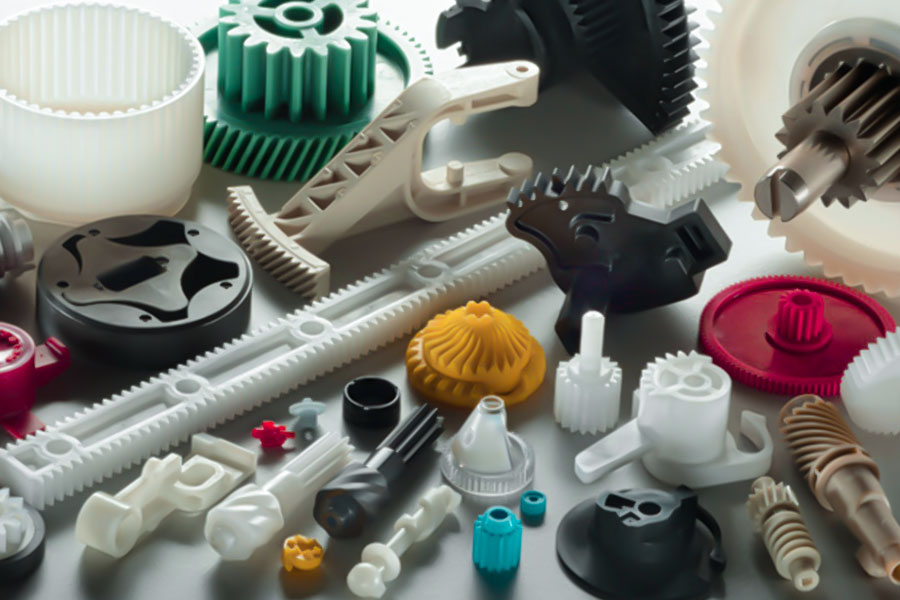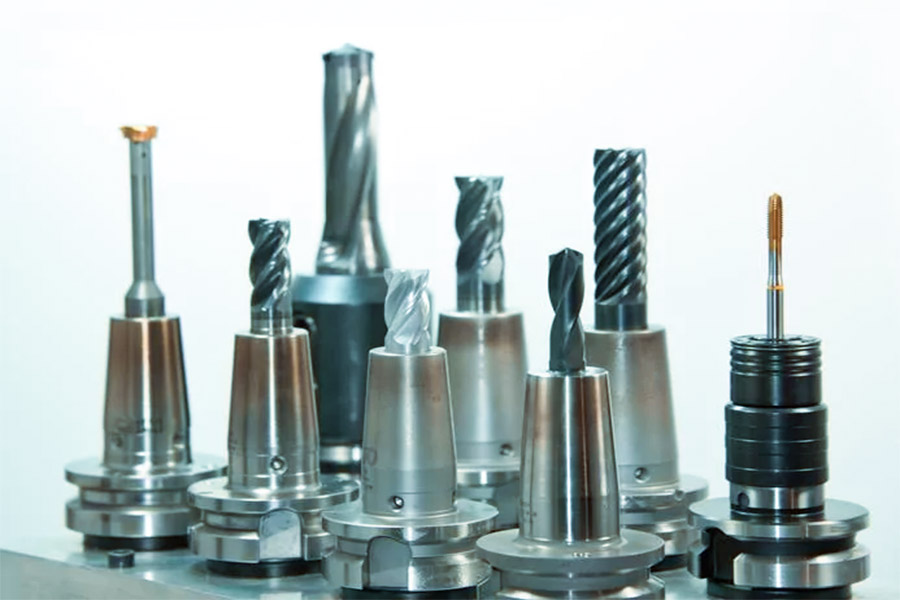cnc - 機械加工は、その高精度と効率性を備えた、航空宇宙、自動車製造、医療機器、その他の分野のコアテクノロジーになりました。 旋盤機械加工の金属部品の精密回転形成または複雑な表面の効率的な形成
このペーパーでは、CNC加工における主流の材料の特性と選択ロジックを体系的に分析して、実務家に設計から実装までの包括的なガイダンスを提供します。 CNC加工は、コンピューター数値制御を介した高精度の自動加工を実現する技術です。 data-len = "189" data-v-7b79c893 = ""> そのコアは、工作機械の動きを制御するための事前にプログラムされた命令を使用するために嘘をつく machining 、mill machining およびその他のマシン形式。 machining は、アルミニウム合金やステンレス鋼などの金属材料だけでなく、プラスチックや複合材などの非金属材料にも適しています。 CNC加工では、金属材料の選択により、完成品の機械加工効率、精度、コスト制御が直接決定されます。 1。 data-len = "35" data-v-7b79c893 = ""> アルミニウム合金(例:6061、7075) アルミニウム合金は、軽量、高熱導電率、優れた切断性能の利点があり、機械加工に適した材料になりました cnc 
CNC加工とは?
CNC加工で最も一般的に使用される金属材料は何ですか?
2。 data-len = "35" data-v-7b79c893 = ""> ステンレス鋼(例:304、316L)
ステンレス鋼はCNCで一般的に使用されます機械加工 医療機器(手術器具)、食品加工など。 Data-TransLateID = "B7F31FB8BB714D6F6A272D16F1691962" data-pos = "186" data-len = "220" data-v-7b79c893 = "" " (1,000〜2,000rpm)および低飼料速度(0.05-0.2mm/r)パラメーター、および摩擦熱を減らすためのクーラント。
3. mold鋼(例:s136、p20)
チタン合金は、 aircraft engine blades blades bedes fode fot fot of for for for for for for for for for for for for for futy for furt of https://jsrpm.com/industry/aerospaceになりました。 抵抗。 5.コッパー合金(例:C18150)
銅合金は熱伝導率であり、5G RFコンポーネントの銅のヒートシンクに最適です。 CNC機械加工中に、材料の酸化を避けるために切断速度(200-400m/min)を制御する必要があり、高圧冷却技術は表面滑らかさを改善するために使用されます。
技術ポイント: CNC加工における異なる金属材料の適応性は、物理的特性と技術パラメーターの一致に依存します。 CNC加工では、非金属材料の分類は主に化学組成と物理的特性に基づいています。 1。 Data-V-7B79C893 = ""> エンジニアリングプラスチック 2. composite Materials data-pos = "0" data-len = "3" data-v-7b79c893 = "" "> 3。 Data-V-7B79C893 = ""> セラミック材料 4。 data-len = "21" data-v-7b79c893 = ""> ラバーとエラストマー テクニカルポイント:非メタリック材料の処理は、マテリアルキャラクターに応じてパラメーターを調整するためにパラメーターを調整する必要があります。 エンジニアリングプラスチックを避ける必要がある場合は、材料を避ける必要があります。レイヤー化。 マテリアルデータベースとプロセスシミュレーションツール、最適な処理スキームは迅速に一致させることができます。 非金属材料の一般的なCNC加工の基本的な分類は何ですか?
非金属材料の一般的なCNC加工の基本的な分類は何ですか?

材料の硬度に基づいてCNC切削工具と機械加工パラメーターを選択する方法?
1。 data-translateId = "89d5a1e9643df5e37cdd5a8c8773b6c7" data-pos = "3" data-len = "80" data-v-7b79c893 = ""
材料の硬度(HRCロックウェルの硬度)によると、3種類の処理オブジェクトがあります。硬度が異なると、ツールの摩耗、切断力、加工精度に異なる影響があります。 JS Companyの長期慣行の概要に基づいて、旋盤シナリオの加工と組み合わせて次のソリューションをお勧めします:
<テーブルスタイル= "境界線 - 崩壊:崩壊;幅:100%;境界線幅:1px;境界線:#000000; height:336.203px;" border = "1"> ツールのカスタマイズ: プロセスパラメーターのインテリジェントな最適化: 材料データベースサポート: 品質保証システム: 4.Operational tips and caveats 1.The main causes of wear of titanium alloy tool 2.Targeted solutions and implementation approaches Combining the technical points of different machining stages, the optimization strategy of JS titanium alloy machining tool wear is introduced below: Optimization of cooling process. 3.Comparison of practical application cases JS optimizes tool and process parameters, and the typical machining effect of titanium alloy is as follows: 4.Precautions and maintenance suggestions 1.Improper humidity control 2.Effects of temperature fluctuations 3.Insufficient packaging protection 4.Lack of anti oxidation measures 5.Misclassification and storage 1.Accelerate the popularization lightweight materials. Aluminum alloy and magnesium alloy: Carbon Fiber Reinforced Polymer (CFRPs): 2.Surge in demand for high-performance engineering materials 3.The rise of sustainable and environmentally friendly materials In the field of CNC machining, material selection and application have always been the key factors to determine product performance and machining efficiency. From traditional aluminum alloys and titanium alloys to emerging carbon fiber composites, CNC machining has diversified the manufacture of precision parts by adapting to the physical properties of different materials. Metallic materials dominate industrial applications due their high strength and thermal conductivity, while non-metallic materials appear in light and extreme environmental scenarios. In the future, with the increasing demand for lightweight, sustainable, and intelligent CNC machining will further integrate AI-driven material databases, multi-axis coupling processes, and green manufacturing technologies to drive breakthroughs in nano-precision and cross-material integration of machining lathe and machining mill, reshaping the boundaries of manufacturing in the future. このページの内容は情報目的のみです。サードパーティのサプライヤーまたはメーカーがJushengネットワークを介して提供するパフォーマンスパラメーター、幾何学的許容範囲、特定の設計機能、材料品質と種類または仕上がりがあると推測すべきではありません。これはバイヤーの責任ですこれらの部分の特定の要件を決定するために、パーツの引用を求めてください。
jsは業界をリードする会社ですカスタム製造ソリューションに焦点を当てています。 5,000人以上の顧客にサービスを提供している20年以上の経験により、高精度 cnc machining 、 1.What should be paid attention to when processing plastic parts? When processing plastic parts, cutting speed and feeding force must be reduced to avoid overheating and deformation. Compressed air is recommended for cooling to avoid cracking or discoloration caused by liquid residues. 2.How to determine when to replace CNC tools? See if the color of the chip darkens, if the finish is rough, if there is a noise. If the tool is badly worn, it needs to be replaced to avoid chippings or reduce accuracy. 3.Why is it necessary to clean the material surface before CNC machining? Remove oil stains or impurities from the surface of the material to prevent any impact on accuracy or damage to the tool during processing and to ensure smooth finish and accurate dimensions. 4.What to do if CNC machining aluminum parts is easy to stick to a knife? Use coated cutting tools (such as TiN) to speed up and reduce feed rates and use a highly lubricating coolant to reduce friction and heat accumulation.
硬度範囲(HRC)
典型的な素材
処理困難
JSテクノロジー対応戦略
低硬度(hrc <30)
アルミニウム合金、銅合金、プラスチック。
切断熱と表面酸化の蓄積
クーラント+高速切断プロセスを最適化します。
中程度の硬度(HRC 30-50)
ステンレス鋼、クエンチ、および焼き付け鋼。
cutlass and workpiece hardening。
コーティングツール +ステージング。
高硬度(hrc> 50)
硬化鋼、鋳鉄、硬い合金。
ツールは迅速に着用し、力を切断する力は急速に増加します。
CBN切削工具+特殊なフィクスチャーデザイン。
硬度グレード
推奨ツール材料
切断速度(m/min)
フィードレート(mm/r)
切断深さ(mm)
jsテクノロジー
低硬度
コーティングされたハード合金(Tialn)
200-400
0.2-0.5
1-3
多軸リンケージコントロール表面粗さ≤0.8μm。
中程度の硬度
細い粒子の硬い合金(yg8)
80-150
0.1-0.3
0.5-2
精度±0.01mm。 の熱変形補正技術
高硬度
CBN切削工具(窒化キュービックボロン)
50-120
0.05-0.2
0.1-0.8
特殊な備品は、振動を減らし、サービスの寿命を3回減らすことができます。

How to solve the tool wear problem of titanium alloy materials in CNC machining?
Causes of wear
Solution
Implementation method
Effect evaluation
Work Hardening
Use superhard tool materials.
Use cubic boron nitride (CBN) or diamond coated cutting tools with hardness ≥ 40GPa were used.
Knife life is 2-3 times longer.
Low thermal conductivity
High pressure micro lubrication + internal (MQL) + internally cooled cutting tools with coolant pressure ≥ 10MPa.
Reduce cutting temperature by -50%.
Chemical bonding wear
Coating technology.
TiAlN/TiCN composite coating thickness of 2-5 μm and friction coefficient <0.3.
The surface roughness ≤ 0.8μm decreased knife viscosity.
Unreasonable cutting parameters
Optimization.
Reduce spindle speed (200-400rpm), reduce feed speed (0.05-0.15mm/r) and increase the axial cutting depth (0.5-2mm).
Reduce cutting force fluctuations and improve processing stability.
The tool Insufficient geometric design
Improved blade shape and chip removal groove.
Spiral chip groove angles (30-45°) were optimized using large rake angles (15-20°) and negative blade inclination angle (-10-15°).
Smooth chip discharge reduces the risk of secondary cutting.
Indicator
Before optimization
JS optimized
Improvement range
Tool life (number of pieces)
50-80 pieces
150-200 pieces
↑ 180%-250%
Surface roughness (Ra)
1.6-3.2μm
≤ 0.8μm
↓ 50%-75%
Processing efficiency (pieces/hour)
10-15 pieces
25-30 pieces
↑ 60%-100%
Cutting force (N)
2,000-2,500
1,200-1,600
↓ 30%-40%
What are the effects of storage conditions for different materials on CNC machining?
The development trend of future CNC machining materials
Summary

免責事項
jsチーム
FAQs
Resources





